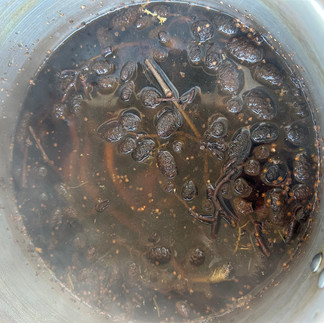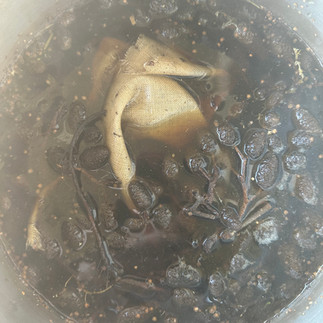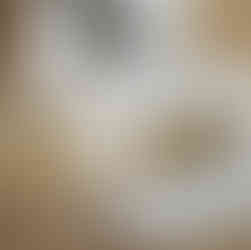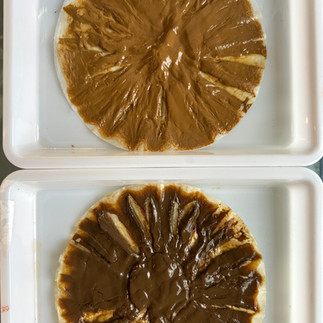Dyeing with Western Red Alder
- Alison Webb
- Mar 3
- 2 min read
Updated: Mar 8

The Western Red Alder (Alnus rubra) is a common tree in the Pacific Northwest, often growing in cool, moist areas near water. The trees produce a male and female catkin (pictured), which resemble cones.
Female catkins, or strobiles, are a great source of natural color and can be used as dye, ink, or paint.
Dyeing Process
Collect dye material
Prepare your dye bath
Dye fiber
Optional: Shift color with iron
Rinse, dry, cure, & wash
Optional: Use leftover dye to make ink or lake pigment
Collecting Alder Catkins
Female Alder catkins are woody and can be found year-round, unlike the male catkins, which deteriorate much faster. If you are collecting from the ground, I would prioritize dry, clean-ish catkins. I collected a quart-size bag for this tutorial.
When collecting any natural material, it is best only to take a small amount. I will take a few here and there until I have enough collected for a project. Take care to only collect in appropriate areas. Many natural areas have strict no-collection rules. Please abide by these.
Dyeing
Add the dye material to your pot and cover it with about 4 quarts of water.
Heat to a simmer and turn off the heat.
Allow the catkins to soak overnight.
Add your prepared fiber.
Slowly bring to a simmer and hold for about 1 hour.
Turn off the heat and let the fibers soak in the dye bath.
This heat-cool cycle can be repeated several times to intensify the color of the fiber.
Rinse, Dry, Cure, Wash
After the final heat-cool dye cycle, remove the fibers from the dye bath and rinse in cool, clean water.
If desired, the color can be shifted with iron.
Hang to dry.
Allowing the dyed fiber to cure for several days or even weeks before washing with detergent may improve the fastness of the color.
After curing, the dyed material can be washed in a gentle pH-neutral detergent.

Use Leftover Dye Bath
There is likely still a lot of pigment left in the alder dye bath. You can use this to make a lake pigment or ink. To make ink, strain the dye bath to remove any solid debris, simmer to reduce, and add a few drops of watercolor binder per ounce of ink to improve adhesion to paper.
Your ink color can be modified with iron in the same manner the dye could be modified. Add a few drops of ferrous sulfate dissolved in water until the desired color change occurs.















